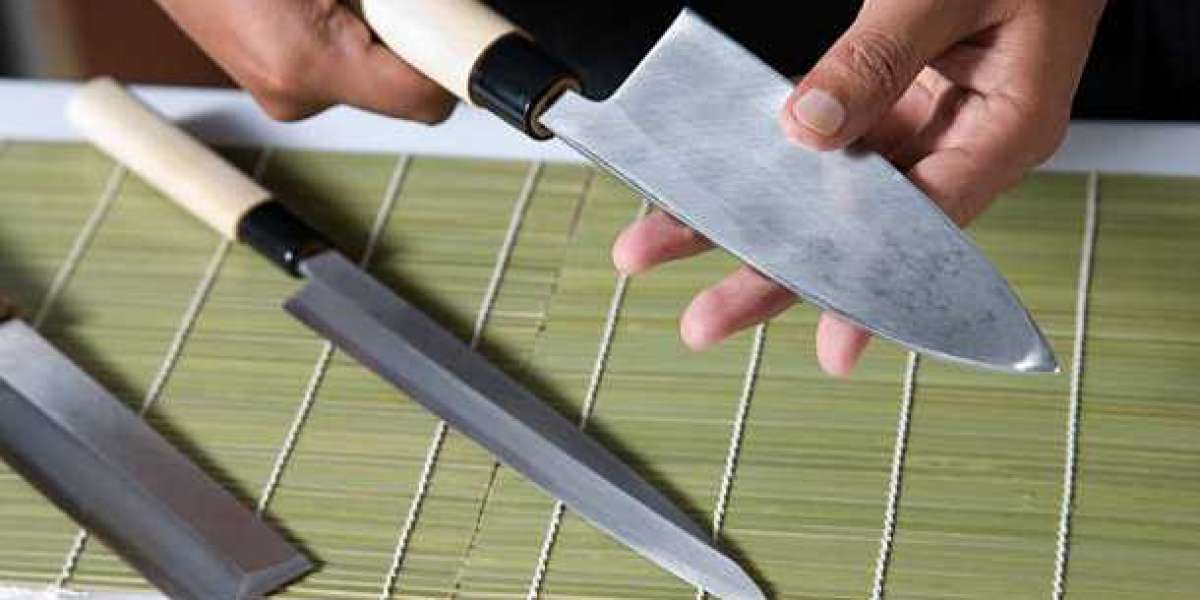Japanese knives are renowned for their precision, sharpness, and craftsmanship, making them prized possessions for professional chefs and home cooks alike. However, owning a Japanese knife setcomes with the responsibility of proper maintenance to ensure longevity and optimal performance. In this comprehensive guide, we'll explore essential tips and techniques for caring for your Japanese knife set, from routine maintenance to expert sharpening methods.
Understanding the Anatomy of a Japanese Knife Set
Before delving into maintenance tips, it's essential to understand the components of a Japanese knife set:
- Blade: Japanese knife blades are typically made from high-carbon steel or stainless steel and are known for their exceptional sharpness and edge retention.
- Handle: The handle of a Japanese knife is often crafted from wood, such as magnolia or ho lumber, for a comfortable grip and ergonomic design.
- Tang: Japanese knives may have either a full tang or a partial tang, which refers to the extension of the blade into the handle. A full tang provides added strength and stability.
- Bolster: Some Japanese knives feature a bolster, a thick band of metal between the blade and the handle, which provides balance and control during use.
Understanding the anatomy of your Japanese knife set containing good kitchen knives is the first step toward proper maintenance and care.
Essential Maintenance Tips for Japanese Knife Sets
To ensure the longevity and sharpness of your Japanese knife set, follow these essential maintenance tips:
- Hand Washing: Always wash your Japanese knives by hand with warm, soapy water immediately after use. Avoid placing them in the dishwasher, as harsh detergents and high heat can damage the blade and handle.
- Drying and Storage: After washing, thoroughly dry your knives with a clean towel to prevent moisture buildup and corrosion. Store them in a knife block, magnetic strip, or protective sheath to avoid damage and maintain sharpness.
- Regular Honing: Use a honing steel or ceramic rod to realign the edge of your Japanese knives between sharpenings gently. Hold the knife at a 15 to 20-degree angle and swipe the blade along the honing rod several times on each side.
- Sharpening: When your Japanese knives start to feel dull or lose their edge, it's time for sharpening. Invest in high-quality sharpening stones or a professional sharpening service to maintain the razor-sharp edge of your knives.
- Avoid Cutting Hard Surfaces: Japanese knives are designed for precision slicing and chopping, not for cutting through bones, frozen foods, or hard surfaces. Avoid using your knives on cutting boards made of glass, marble, or granite, as these materials can dull the blade.
Expert Tips for Sharpening Japanese Knives
While regular honing can help maintain the sharpness of your Japanese knives, periodic sharpening is essential for optimal performance. Here are some expert tips for sharpening Japanese knives:
- Select the Right Sharpening Stone: Choose a sharpening stone with the appropriate grit level for your needs. Coarse stones (around 1000 grit) are ideal for repairing nicks and restoring the edge, while finer stones (3000-8000 grit) are used for polishing and refining the edge.
- Maintain Consistent Angles: When sharpening Japanese knives, maintain a consistent angle of 10 to 15 degrees on each side of the blade to ensure a symmetrical edge. Use light pressure and smooth, fluid motions to achieve optimal results.
- Use a Whetstone Holder: To prevent the sharpening stone from slipping during use, place it on a whetstone holder or damp towel to secure it in place. This will ensure stability and accuracy while sharpening your knives.
- Finish with Honing: After sharpening, finish the process by honing the edge with a fine-grit sharpening stone or honing rod to remove any burrs and achieve a razor-sharp finish.
Conclusion
Proper maintenance is essential for preserving the precision, longevity, and sharpness of your Japanese knife set. By following these tips for hand washing, drying, honing, sharpening, and storage, you can ensure that your knives remain in pristine condition for years to come. Whether you're a professional chef or a home cook, investing time and care into maintaining your Japanese knives will enhance your culinary experience and elevate your cooking skills to new heights.



